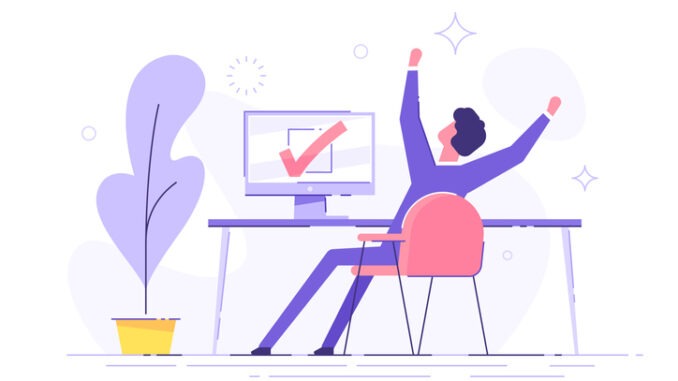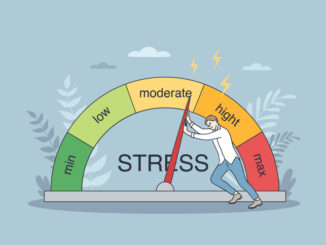
Val Andrew helps you beat the frustration by revisiting some tried and tested time management techniques
Those of you who’ve read my previous articles will know just how genuinely concerned I am about the challenges and pressures on our school business management and leadership professionals. I am writing this piece, mindful of the potential scorn it may attract, not intending to be in any way patronising, but hoping that, by revisiting one or two simple strategies, you could perhaps rebalance things and make your day(s) look more manageable.
In my January article I referenced the famous and inspirational quote by Dr Wayne Dyer:-
“If you change the way you look at things, the things you look at change”
With this in mind, I hope you’ll read this, reflect on it, and then review your own situation through a slightly different lens; it may take only one small adjustment to make a difference.
Consider the 80/20 rule, aka the ‘Pareto Principle’
This concept helps you to examine the distribution of work and effort – in terms of time management this generally means that 80% of results achieved come from just 20% of our efforts. Working in schools it’s easy to be drawn into the ‘stuff’ that doesn’t have a huge impact – at this point I can hear all of you working in primary settings starting to yell! As a lifelong procrastinator I can confirm that, when faced with a huge pile of work, there is a tendency to choose the less important, simpler, stuff first and delay tackling the impactful BIG project that’s been sitting on your desk for the last week; it’s easier to reply to insignificant emails, chat to staff, and give in to other distractions around you.
My go to solution is set out in Brian Tracy’s excellent book Eat That Frog! which is well worth a read. Tracy helped me by introducing me to his version of creative procrastination – setting aside time to concentrate on the big things you need to do and do this every day.
Touch and do
This was a concept introduced to me many years ago by an office colleague; it directly relates to the management of workload. She insisted that one day, every week, we had a ‘touch’ and ‘do’ day. This sounds bonkers – but actually works really well. It discourages paper shuffling and procrastination tendencies. The secret is to be careful what you actually touch on that day because, once you pick up a piece of paper or a task, you have to finish it – you can’t put it down and look at something else until it’s done. If you think I’ve lost my marbles I challenge you to give it a try!
Power hour
Not an original idea, but works well for some people. I am a morning person and am much more productive at that time of day. Some people prefer to use their power hour (whatever time of day this is for you) and dedicate this time to doing non-work-related stuff – e.g., exercise, meditation etc. – and that’s absolutely fine too. For me, arriving at work an hour earlier – occasionally – helped me to focus on that ‘big frog’ and/or spend that first hour concentrating on urgent tasks that had become a priority. It was my productive time.
The danger is not letting this become a regular habit and, perhaps, committing to leaving an hour earlier at the end of that particular day. In the same vein DON’T BE THE LAST ONE OUT OF SCHOOL EVERY DAY!Many moons ago I got into some really bad work habits and got fed up with being the first one in and last one out of school every single day. I had to make some changes to break those habits; one of the strategies that worked for me was a commitment to leaving early on one day every week. This could be your power hour; you don’t have to commit it to work – just whatever works best for you and your own situation.
Exploit technology
I think we’ve all become so much better at this, especially in the last couple of years. We are still involved in online meetings which, despite one or two disadvantages, have saved us masses of time – particularly travelling here, there and wherever. Training and networking have moved online, we can work from home, and there is much more flexibility now. This said, whilst we are seeing a return to more face-to-face engagement, there will be lasting legacies of the pandemic and some ongoing use of technology can only be good for SBM/Ls. There are one or two small things you can still change to help you focus on ‘that frog’ to mitigate distractions – for example, turn off the annoying reminder that pops up in the corner of your screen to alert you to a new email! It took me years to find out how to turn that notification option off!
Abandon multi-tasking
I never really felt this ‘skill’ was a good one to hone; it seemed to encourage us to try and juggle too many balls at the same time. As a full-time working mum, I quickly subscribed to the notion that I was destined to always be a single-tasker – for me, multi-tasking seemed to always end in me screwing several things up all at once! Focusing on one thing, and doing it well, is by far the best approach. UTo continue with the juggling analogy, it just takes one extra ball into the mix for everything comes tumbling down around your ears. This links well to my earlier recommendations relating to ‘touch and do’!
Open door policy – WHY?
This was a trap I fell into quite early on in my SBM career – I felt it was a way of being approachable and transparent so that staff would engage with me and I could motivate them etc. I quickly realised it was not the greatest move – and I’m guessing that the pandemic might have conveniently put a stop to some legacy habits where it has become accepted practice to continually disturb the SBM in order to moan about something, or offload work, or just to steal their time! I’d be inclined to use the ‘new ways of working’ mantra, post-pandemic, in order to abandon this with haste. In my experience, even closing the door and putting up a ‘Do not disturb’ notice won’t deter the most determined time-waster.
Summary
There are lots of other strategies you can adopt to help minimise wasting time and to try and be more time efficient. Some will work for you and some won’t – some are legal and some aren’t!
I’d urge you to look for ways that will work for you; try to make even a small change that might be the difference between tipping you over the edge or not. The World Health Organization has actually classified ‘burnout’ as a real health issue now, so organisations everywhere need to be reviewing the impact on their people and ensuring there are strategies in place for support. Remember, ‘health is wealth’; nobody ever lay on their death bed saying they wish they’d spent more time at work!
If you feel the pressure is mounting, talk to someone – either in your school or outside. It’s now much more acceptable to talk about feeling under pressure, and the impact it’s having on you (another benefit we have to thank COVID for). Abandon that guilt bag – why take work home when there’s no capacity for you to do it – it’s just adding to your guilt – leave it at work.
Delegate if you can. It’s not always possible but, if there is scope to do this, explore it. If this means encouraging someone to engage in CPD to develop their skills – which will then provide that much-needed capacity – pursue it. There is a new DSBM L4 cohort starting in March with BPN (see below) – maybe someone in your team might be interested in doing this?
https://www.bestpracticenet.co.uk/dsbm-l4
Good luck – and let me know how the ‘touch and do’ strategy is working for you!
Val Andrew is:
- Programme Manager for Best Practice Network DSBM Level 4. Find out more: https://www.bestpracticenet.co.uk/dsbm-l4.
- Patron of ISBL.
- Formerly ASCL School Business Leadership Specialist (2010 – 2018).
- Recipient of ISBL CEO Award for exceptional contributions to school business leadership in 2018.
- Semi – retired SBL and very proud grandma.




Be the first to comment